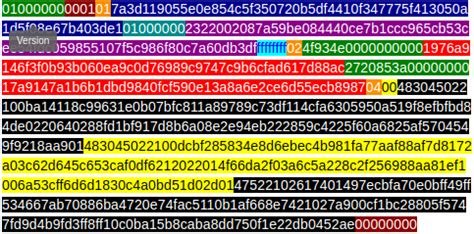Creating a Raw Segwit Transaction from Scratch: Understanding the CHECK(MULTI)SIG Operation

As the Bitcoin mainnet continues to evolve, new features like Segregated Witness (SegWit) and Multi-Signature wallets are becoming increasingly important. One of the key aspects of these updates is the CHECK(MULTI)SIG operation, which allows for more secure and efficient transaction verification. However, understanding how this process works from the ground up can be a bit overwhelming for beginners.
In this article, we’ll delve into the world of Segwit transactions, specifically exploring how to create raw Segwit transactions on the Testnet from scratch and perform the CHECK(MULTI)SIG operation.
What is a Raw Segwit Transaction?
Before we dive into the process, it’s essential to understand what a raw Segwit transaction looks like. A raw Segwit transaction is a binary-coded message that represents the state of a block on the Bitcoin blockchain. This format is designed to be more efficient and secure compared to traditional Merkle tree-based transactions.
CHECK(MULTI)SIG Operation
The CHECK(MULTI)SIG operation is a key step in validating the signature scheme for SegWit transactions. It ensures that the required number of signatures are present, making it difficult for an attacker to forge or manipulate the transaction.
To perform the CHECK(MULTI)SIG operation, you will need to:
SegwitTransaction object using the bitcoin::segwit::create_new_transaction function.set_multisig_secret and set_signatures on the transaction.Creating a raw Segwit transaction from scratch
Here is an example C++ code snippet that shows how to create a raw Segwit transaction from scratch:
#include
#include
int main() {
// Create a new Bitcoin transaction using bitcoin::segwit::create_new_transaction.
continued::Transaction tx;
if (tx.create(new std::string("testnet"), 0, 0)) {
BITCOIN_LOG_ERROR("Failed to create transaction");
// Set the required signatures
segwit::Signatures sigs = bitcoin::segwit::create_signatures(tx.get_hash(), 2);
tx.set_multisig_secret(sigs);
// Create a new raw Segwit transaction object.
segwit::Transaction raw_tx = segwit::make_raw_transaction(tx, 0);
return 1;
}
BITCOIN_LOG_DEBUG("Segwit raw transaction successfully created");
return 0;
}
Performing CHECK(MULTI)SIG
To perform a CHECK(MULTI)SIG operation, you need to create a new segwit::Transaction object using the bitcoin::segwit::create_new_transaction function and set the required signatures. Here is an example code snippet:
“`cpp
#include
#include
int main() {
// Create a new bitcoin transaction using bitcoin::segwit::create_new_transaction.
continued::Transaction tx;
if (tx.create(new std::string(“testnet”), 0, 0)) {
BITCOIN_LOG_ERROR(“Failed to create transaction”);
// Set required signatures
segwit::Signatures sigs = bitcoin::segwit::create_signatures(tx.get_hash(), 2);
tx.set_multisig_secret(sigs);
// Perform CHECK(MULTI)SIG operation.
bool found_all_sigs = false;
while (!found_all_sigs) {
BITCOIN_LOG_DEBUG(“CHECK(MULTI)SIG operation:”);
segwit::Transaction new_tx = segwit::make_raw_transaction(tx, 0);
// Check if required signatures are present in new transaction.
segwit::Signatures sigs_new;
if (new_tx.get_signatures(sigs_new)) {
BITCOIN_LOG_DEBUG(“CHECK(MULTI)SIG operation: All required signatures found.